Study-astronomy-biology-ref - Astronomy, Biology, Study References And Science

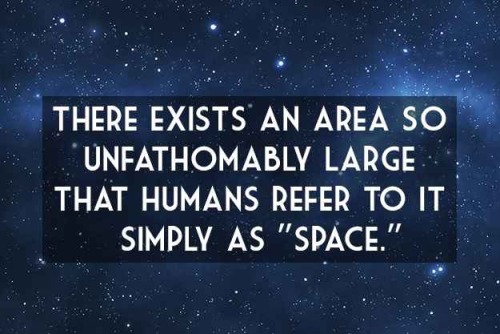
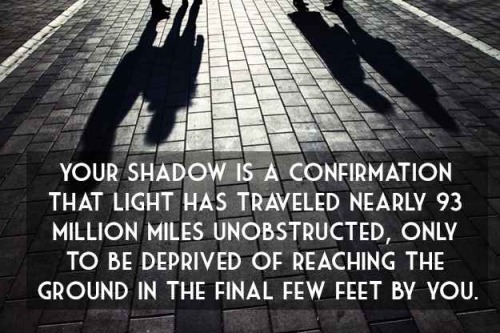


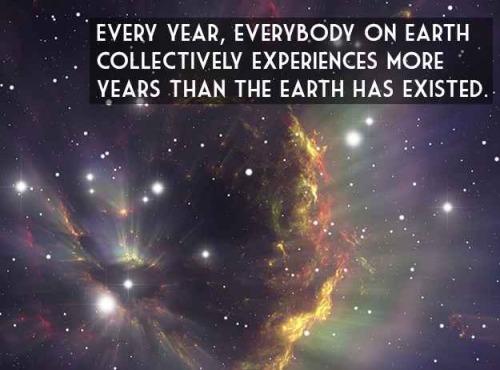
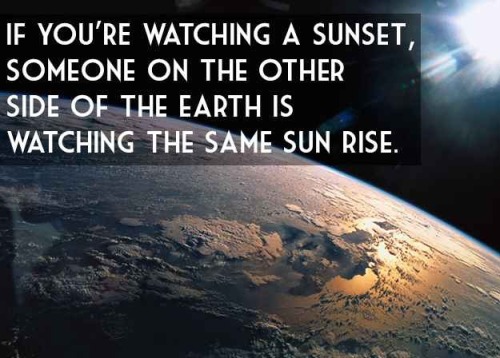
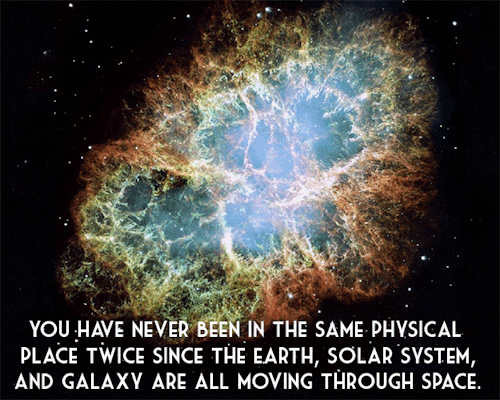
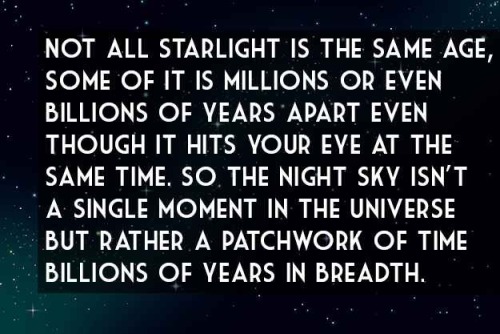
More Posts from Study-astronomy-biology-ref and Others

Three galaxies at once
Rising majestically above the telescopes of ESO’s La Silla Observatory in Chile we see the Milky Way accompanied by its two dwarf neighbour galaxies, the Large and Small Magellanic Clouds.
Credit: ESO/A. Santerne
is there anything you can tell us to expand on the space time ripples found in simulated black hole collisions?
Hi!
In one of my other responses I explained the whole concept of space time, here’s how i explained that:
A way that you can picture the bending of space time is this:
Picture two chairs, the backs facing each other. Then tape one end of a blanket to one of the chair backs and the other end of the blanket to the other chair back. What you have now should like this:

Now, if you were to place a tennis ball somewhere on the light blue blanket (top blanket), that blanket would no longer be flat, there would be a bend or a curve in it. Let’s say you put a basketball on the top blanket instead of a tennis ball. Since the basketball is bigger, the bend/curve that it makes will be a lot bigger than the tennis ball’s because the basketball has more mass.
So that blue blanket at the top of the chairs represents space time. If there were to be two large objects, let’s say basketballs, that were to “collide” (representing two black holes). Since they’re so large, they’d create these ripples in the blanket that can be observed.
Another easier way to think about it is like dropping a pebble into a lake. The bigger the pebble, the stronger and more frequent the ripples are. So since black holes are very massive, they create larger ripples compared to something smaller!
Astronomers haven’t been able to directly observe these ripples in space time, they were theorized by Einstein, however there’s an announcement being made all over the world today about data obtained from the Laser Interferometer Gravitational-Wave Observatory (LIGO)!
Here is a link talking a bit about that press conference!
I hope that helped to clarify everything! If not, feel free to ask again and I’ll try my best to clarify!
UPDATE: HERE are the findings of the conference, they’ve detected them for the first time!

Would It Be A Bad Thing to Wipe Out A Species … If It’s A Mosquito?
Mosquitoes have a nasty reputation.
The species Aedes aegypti, for example, is currently responsible for spreading the Zika virus through the Americas and also infects humans with dengue fever, chikungunya and yellow fever.
This raises the question: Should there be an effort to get rid of Aedes aegypti for good?
“There’s been lots of debate in the last 10 years whether we should eradicate mosquitoes, or at least the 100 species or so that serve as disease vectors for humans,” says David Magnus, director of Stanford University’s Center for Biomedical Ethics. “If you look at the science, the majority [of scientists] think we could probably eliminate mosquitoes without too much harm on the environment.”
Read the full story here.
Illustration: Matthew Twombly
Want to See the Oldest Surviving Video of a Total Solar Eclipse?
It was done in – wait for it – 1900! The first total solar eclipse to be filmed has recently been restored. The film was done by Nevil Maskelyne, an illusionist turned astronomic videographer for the British Royal Astronomical Society.
This 1900 film is actually Maskelyne’s second attempt at filming a total solar eclipse. His first attempt was in 1898, when he traveled all the way to India to be at the right place to view a predicted total eclipse. Maskelyne got there in time, but sadly, his film was stolen, and the crime remains unsolved and the film unrecovered.



▪︎Copernican armillary sphere.
Date: 1807-1846
Place of origin: Paris
From the source: Copernican armillary sphere from set of two armillary spheres and a celestial globe constructed in paper on pasteboard with metal fitments supported on a decorative mahogany baluster base. Shows planets out to Uranus, plus four asteroids, Ceres, Pallas, Juno & Vesta, first quarter 19th century.
It’s Pi Day!
Pi Day, the informal holiday beloved by math enthusiasts — and even by the math averse — is here! March 14 marks the yearly celebration of the mathematical constant π (pi).

What is Pi?
Pi (3.1415….) is the ratio of circumference to diameter in a circle. Any time you want to find out the distance around a circle when you have the distance across it, you will need this formula.
Despite its frequent appearance in math and science, you can’t write pi as a simple fraction or calculate it by dividing two integers. For this reason, pi is said to be “irrational.” Pi’s digits extend infinitely and without any pattern, adding to its intrigue and mystery.
How Do We Use Pi at NASA?

Measurements: Pi can be used to make measurements – like perimeter, area and volume.
For example, sometimes we use lasers to explode ice samples and study their composition. In this scenario, we can uses pi to calculate the width of the laser beam, which in turn can be used to calculate the amount of energy, or fluence, that hits the ice sample. A larger fluence equals a bigger explosion in the ice.

Commanding Rovers: Pi is also used every day commanding rovers on the Red Planet. Everything from taking images, turning the wheels, driving around, operating the robotic arm and even talking to Earth!
Make sure to follow us on Tumblr for your regular dose of space: http://nasa.tumblr.com










This Year in Space (infographic)
From Pluto to the most Earth-like planet ever discovered…this years was a fantastic year in space. Here are the most notable astronomical events from 2015.
May you all journey well into 2016.
See all our infographics at: http://futurism.com/infographics/









On October 8 a privileged few could see auroras in abnormally low latitudes, as the spectacular pictures above taken in Wales and Northern England.
Via TON: Northern Lights Put On Spectacular Show As Aurora Borealis Lit Skies Over Wales And Yorkshire.
An asteroid the size of a skyscraper should pass near the Earth on August 10th
Asteroid Watch logo. August 5, 2019
Near Earth Asteroid
An asteroid 570 meters in diameter is expected to approach 8 million kilometers from our planet on August 10. The situation is of no concern to NASA specialists, who stress the large number of similar celestial objects that are spotted each year near the Earth. The space agency says it fears more those who are not listed.
Artist’s impression of 2006 QQ23 asteroid
According to NASA, an asteroid the size of a skyscraper will pass near the Earth on Saturday, August 10. Called “2006 QQ23”, the celestial object is approximately 570 meters in diameter and its trajectory will place it at a distance of 8 million kilometers from our planet, closer to home, says CNN. A “more or less benign” situation for experts from the American Space Agency. This asteroid is of a “moderate size” Lindley Johnson of NASA’s Global Coordinating Office for Defense says the asteroid is “of moderate size” and explains that half a dozen similar-sized aerolites are approaching each year. Not to mention that the solar system includes nearly 900 of a volume greater than that which advances towards the Earth. The specialists are therefore reassuring.
2006 QQ23 orbit
They explain having already studied the movements of “2006 QQ23” since the year 1901 and until 2200. Because a possible impact between the Earth and a foreign body of this size would cause significant damage over a large area . Even if this scenario occurred, NASA would then be able to launch a space mission to deflect the celestial object. When it comes to asteroids, “it’s the ones we do not know about that worry us,” says Kelly Fast, also a member of the Coordination Office. Related article: Asteroid’s surprise close approach illustrates need for more eyes on the sky https://orbiterchspacenews.blogspot.com/2019/08/asteroids-surprise-close-approach.html Additional information: Asteroid Watch: For more information about asteroids and near-Earth objects, visit: http://www.jpl.nasa.gov/asteroidwatch and http://www.nasa.gov/asteroid . Updates about near-Earth objects are also available by following AsteroidWatch on Twitter at http://www.twitter.com/asteroidwatch . Near-Earth Object Program Office: http://neo.jpl.nasa.gov/ Images, Text, Credits: AFP/NASA/ESA/Orbiter.ch Aerospace/Roland Berga. Best regards, Orbiter.ch Full article
-
 4whlpotts liked this · 2 weeks ago
4whlpotts liked this · 2 weeks ago -
 futurejiggy liked this · 2 weeks ago
futurejiggy liked this · 2 weeks ago -
 that-girl-diary liked this · 3 weeks ago
that-girl-diary liked this · 3 weeks ago -
 knotsoweldeadll reblogged this · 3 weeks ago
knotsoweldeadll reblogged this · 3 weeks ago -
 mairem liked this · 1 month ago
mairem liked this · 1 month ago -
 got2rambleon4 reblogged this · 1 month ago
got2rambleon4 reblogged this · 1 month ago -
 got2rambleon4 liked this · 1 month ago
got2rambleon4 liked this · 1 month ago -
 nihilistghoul liked this · 1 month ago
nihilistghoul liked this · 1 month ago -
 ddjordje liked this · 1 month ago
ddjordje liked this · 1 month ago -
 saygoodnight2theworld reblogged this · 1 month ago
saygoodnight2theworld reblogged this · 1 month ago -
 saygoodnight2theworld liked this · 1 month ago
saygoodnight2theworld liked this · 1 month ago -
 daengeli liked this · 1 month ago
daengeli liked this · 1 month ago -
 cataradical liked this · 7 months ago
cataradical liked this · 7 months ago -
 whzzitt reblogged this · 9 months ago
whzzitt reblogged this · 9 months ago -
 mnemonic-horse reblogged this · 9 months ago
mnemonic-horse reblogged this · 9 months ago -
 lychbeast reblogged this · 9 months ago
lychbeast reblogged this · 9 months ago -
 t-rexdescendant reblogged this · 9 months ago
t-rexdescendant reblogged this · 9 months ago -
 rogue-healer reblogged this · 9 months ago
rogue-healer reblogged this · 9 months ago -
 rogue-healer liked this · 9 months ago
rogue-healer liked this · 9 months ago -
 marcopolo1109 liked this · 9 months ago
marcopolo1109 liked this · 9 months ago -
 friznod liked this · 9 months ago
friznod liked this · 9 months ago -
 fallengraywolf reblogged this · 9 months ago
fallengraywolf reblogged this · 9 months ago -
 humanityinmotion reblogged this · 9 months ago
humanityinmotion reblogged this · 9 months ago -
 inhumaninterest liked this · 10 months ago
inhumaninterest liked this · 10 months ago -
 ask-de-writer reblogged this · 10 months ago
ask-de-writer reblogged this · 10 months ago -
 leda-timeandspace reblogged this · 11 months ago
leda-timeandspace reblogged this · 11 months ago -
 aspoonfulofwitchcraft liked this · 1 year ago
aspoonfulofwitchcraft liked this · 1 year ago -
 saphicspacesociety20 reblogged this · 1 year ago
saphicspacesociety20 reblogged this · 1 year ago -
 jay1538 liked this · 1 year ago
jay1538 liked this · 1 year ago -
 oleg-rybak liked this · 1 year ago
oleg-rybak liked this · 1 year ago -
 spnbitchnomore liked this · 1 year ago
spnbitchnomore liked this · 1 year ago -
 catsilver reblogged this · 1 year ago
catsilver reblogged this · 1 year ago -
 lenisbalenas liked this · 1 year ago
lenisbalenas liked this · 1 year ago -
 enstarsenpali liked this · 1 year ago
enstarsenpali liked this · 1 year ago -
 siriuslypoppunk reblogged this · 1 year ago
siriuslypoppunk reblogged this · 1 year ago -
 louisedespont liked this · 1 year ago
louisedespont liked this · 1 year ago -
 sims3-dh liked this · 1 year ago
sims3-dh liked this · 1 year ago -
 antegalspet liked this · 1 year ago
antegalspet liked this · 1 year ago -
 joshuahowls liked this · 1 year ago
joshuahowls liked this · 1 year ago

This is a studyblr for everyone have some passion for science, especially astronomy and biology
129 posts